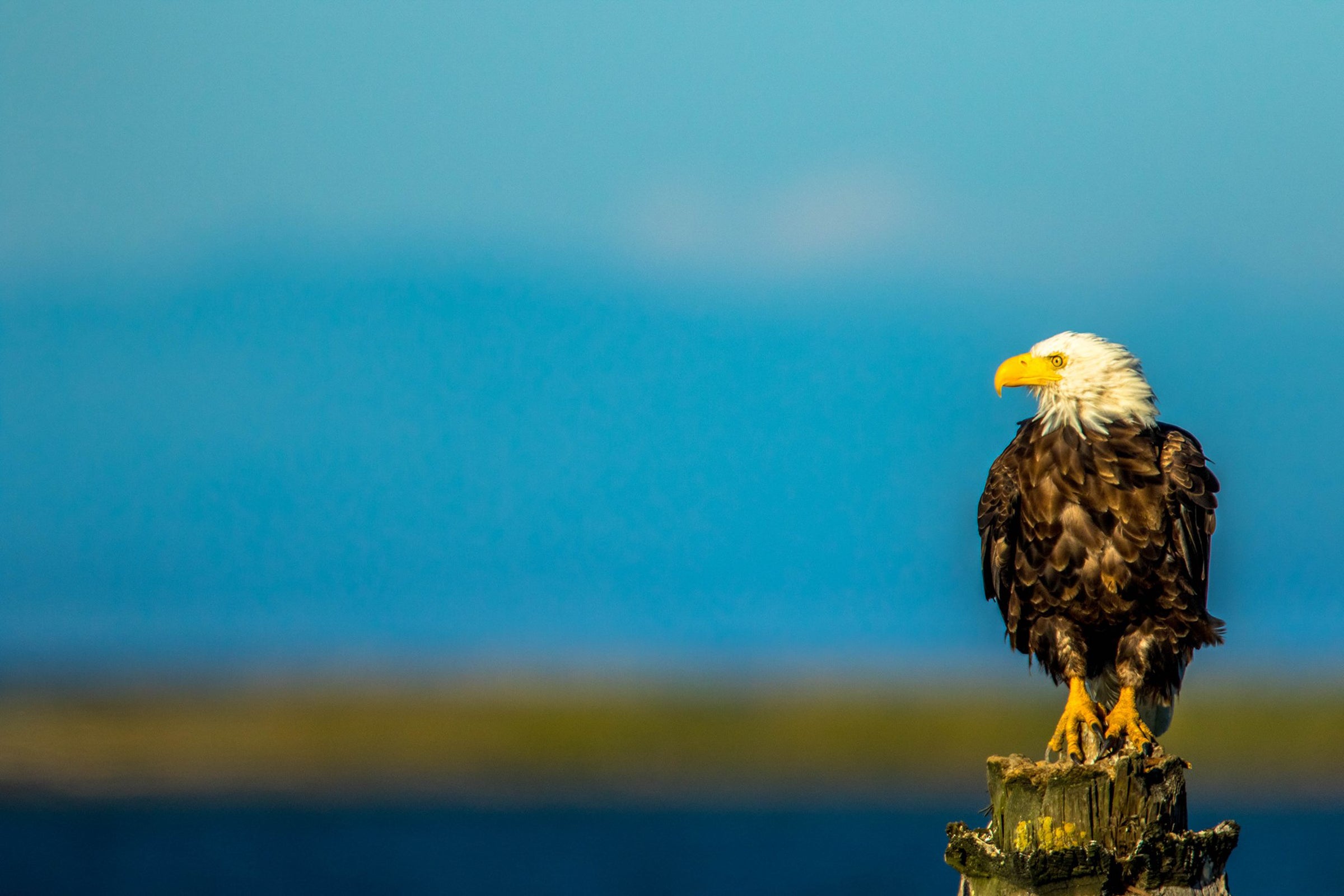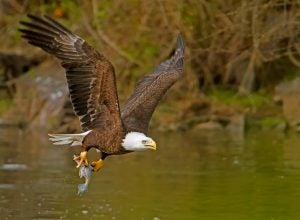What will the future look like for Bald Eagles in coastal Louisiana?
With its large dark brown body, snowy-white head and fearsome yellow talons and bill, the Bald Eagle (Haliaeetus leucocephalus) is one of the most recognizable raptors in the United States. Selected as the national bird for its representation of strength and courage, the Bald Eagle also plays a non-figurative role in nature as an indicator of ecosystem health. The eagle’s preference for forested wetlands makes it representative of healthy upper estuary habitat and its role as an apex predator has a cascading effect on local ecosystems.
The Southern Bald Eagle (H. l. leucocephalus), the nominate subspecies, is found across the southern United States, including in Louisiana. Unlike many other birds, Southern Bald Eagles nest and raise their young during our fall and winter. You can find them establishing breeding territories and nesting in mature bald cypress trees, utilizing inland swamps and marshes for habitat and foraging. The south-central and southeastern portions of the state, the Atchafalaya, Terrebonne, Barataria, and Pontchartrain Basins, provide ideal habitat for our national bird.
However, the future of this species in Louisiana is uncertain. Loss of vital wetlands, saltwater intrusion, and sea level rise are just a few of the stressors negatively impacting this ecosystem, and as a result, potentially limiting the decades of population growth we’ve seen over the last few decades. With Louisiana losing a football field of coastal land every 100 minutes, it is more important than ever to evaluate the impact these future landscape changes will have on our wildlife, starting with the Bald Eagle.
To assess the potential impacts, Audubon Delta worked with Abt Associates and Louisiana’s Coastal Protection and Restoration Authority to develop a Habitat Suitability Index (HSI) model for the Southern Bald Eagle in coastal Louisiana. HSI are a way to measure whether a habitat is suitable for a given species; this is done by combining habitat characteristics, such as elevation, land cover, and soil type, to determine if the habitat can support the species. This particular model was developed for the 2023 Coastal Master Plan to evaluate the potential effects of restoration projects on eagle habitat.
Using eagle nest location data collected by the Louisiana Department of Wildlife and Fisheries, researchers evaluated the probability a nest would occur on a particular land cover type within the Coastal Zone of Louisiana. The different land cover includes agriculture, developed and upland, forested wetlands, fresh marsh, brackish marsh, intermediate marsh, salt marsh, flotant marsh, and open water.
The results of the model demonstrate that bald eagle nests are more likely to occur on forested wetlands, flotant marsh, and, to a lesser extent, open water habitats, whereas nest occurrence was negatively related to agricultural land. Additionally, eagle nest occurrence was highest between the Atchafalaya and Mississippi Rivers.
So, what does this all mean for the future of the Bald Eagle in southeast Louisiana? The model shows evidence that changes to our coastal wetlands, like the loss of forested wetland habitat, may have a noticeable negative impact on bald eagle populations. As our coastal wetlands continue to shrink and as climate change brings about additional stressors on the ecosystem, the future of the eagle in Louisiana is uncertain.
But there is still hope for our feathery national emblem. The Habitat Suitability Index shows that coastal restoration projects upstream, such as freshwater and sediment diversions, will help create more land and healthy habitat for the eagle to nest and forage. Downstream restoration projects like barrier reef construction will also provide benefits to the bald eagle by creating storm surge protection and buffers to keep saltwater from impacting habitat upstream.
With the looming threats of climate change and the continuing deterioration of our coastal wetlands, we must act now to restore our coast. Investments into natural infrastructure projects – especially those projects outlined in the Coastal Master Plan – will not only protect our national bird, but all the species that depend on healthy wetlands for survival.


